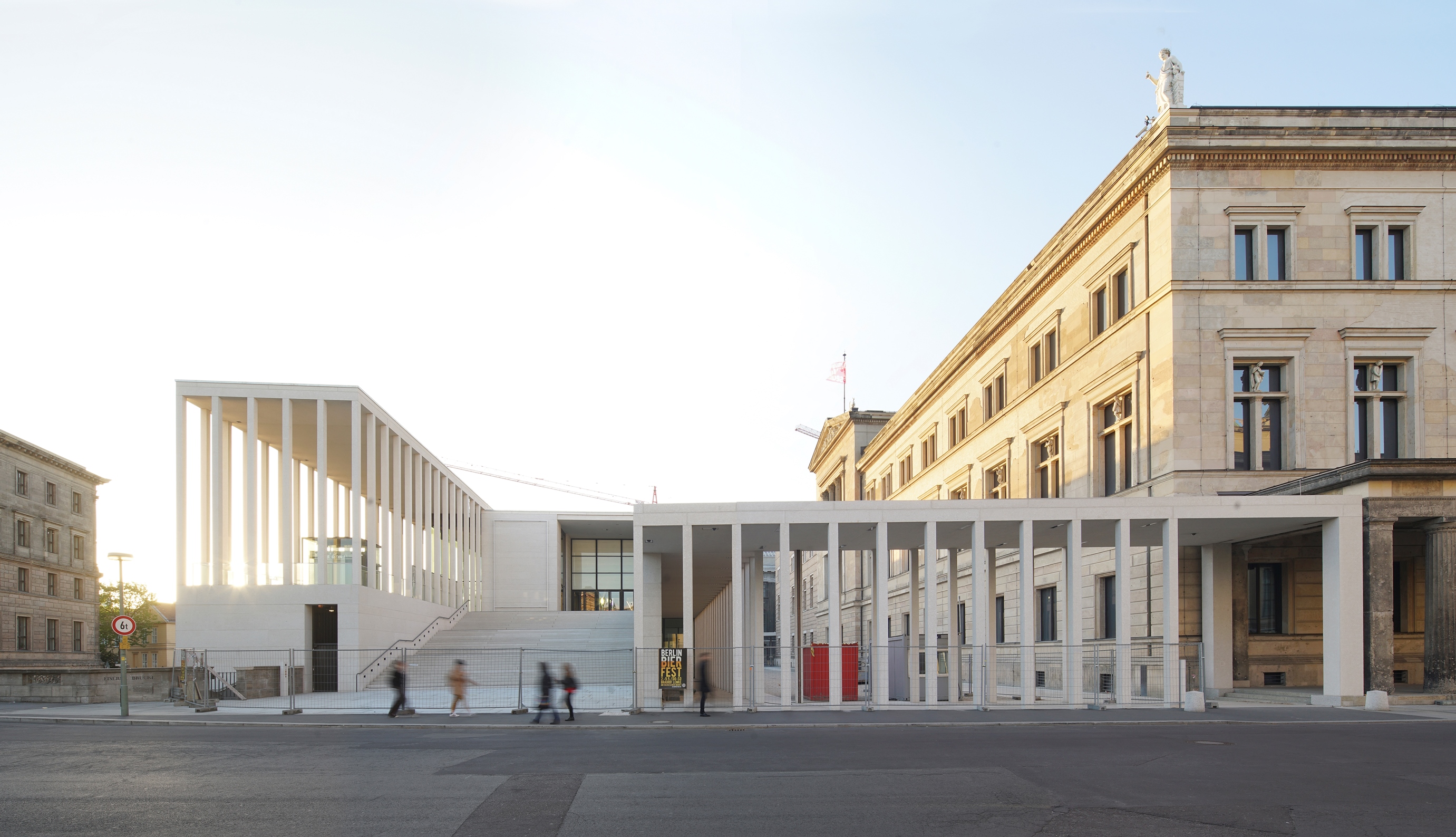
David Chipperfield Architects: James-Simon-Galerie
Entrée to the Berlin Museum Island is characterized by colonnades of white fairfaced concrete
The James Simon Gallery is the imposing new entrance building to Berlin's Museum Island. A key element of Chipperfield's architecture is the fine architectural concrete colonnade - manufactured with Dyckerhoff WEISS.
The 92 square pillars of the high colonnade rise almost 9 m high. On top of the pillars rests the flat, filigree roof, also made of architectural concrete. Under the colonnades is a 10 m high and 100 m long base. This serves as protection against the water of the Kupferkanal, a branch canal of the Spree. The base consists of a total of 280 individual elements made of architectural concrete. The court colonnades, the large outside staircase and the terrace coverings were also produced on the basis of Dyckerhoff WEISS.
The contract for the delivery of all architectural concrete prefabricated parts was secured by Dreßler Bau from Stockstadt. The aggregate of marble splinters provides the white-beige look of the architectural concrete and creates the desired harmony with the other buildings on the Museum Island. The finished parts meet the highest exposed concrete requirements. The surface is sandblasted, giving the concrete a vivid appearance.
As a visitor centre, the James Simon Gallery performs central service functions for the other buildings on the Museum Island. In addition to the cash desk area, the 4,600 m² building houses a café, a museum shop, a lecture hall for 300 listeners and a room for special exhibitions. The James Simon Gallery is the only entrance to the Pergamon Museum and one of two entrances to the Neues Museum via the underground Archaeological Promenade. Once the Museum Island master plan has been completed, the access will extend via the Archaeological Promenade from the Altes Museum to the Bode Museum. Nevertheless, all houses will retain their historical main entrances.
The building takes its name from James Henry Simon (1851-1932), an important patron of the arts during the imperial era. He bequeathed large parts of his art collections to the Berlin museums. The best-known individual object is the bust of Nefertiti on display in the Neues Museum today. It was discovered in 1913 during an excavation financed by James Simon.
The construction of the James Simon Galerie lasted from 2009 to 2018. The completion date had been postponed by years, as it was only during construction that it was discovered that the building ground was only capable of bearing loads at a depth of approx. 40 m. Therefore, the new building had to be founded on approx. 1,200 piles. The opening ceremony took place on 13 July 2019.
The Museum Island has been a UNESCO World Heritage Site since 1999. In the same year, it was decided to carry out a fundamental renovation of this unique ensemble, which has since been implemented step by step. The extensive restoration of the Neues Museum had already been completed in 2009, also according to a design by David Chipperfield. An essential part of the restoration concept consisted of the use of prefabricated parts made of architectural concrete - manufactured with Dyckerhoff WEISS.






